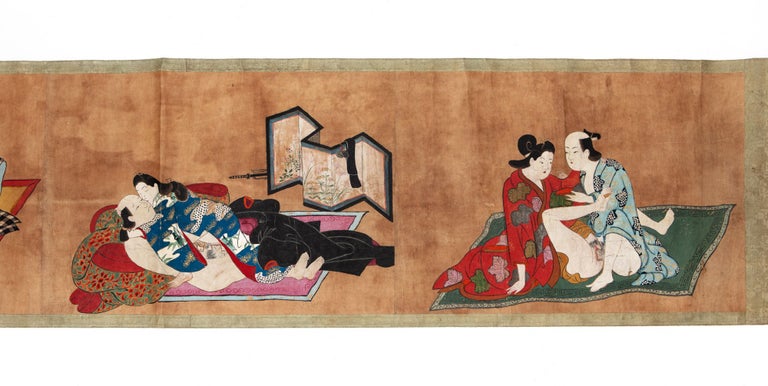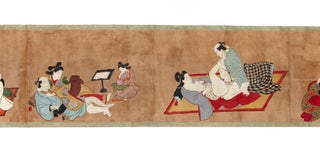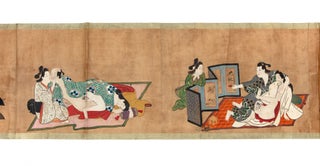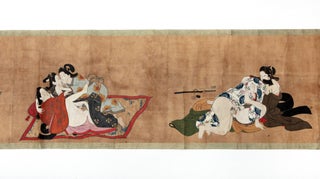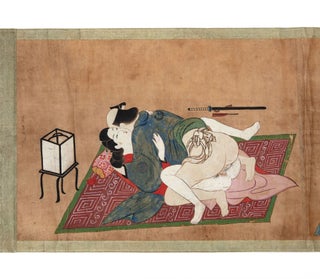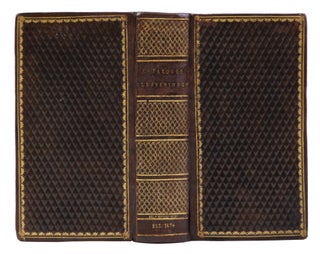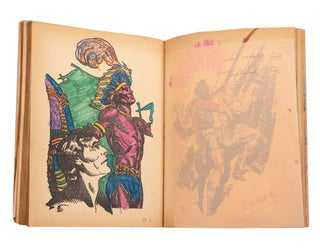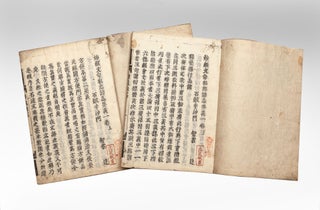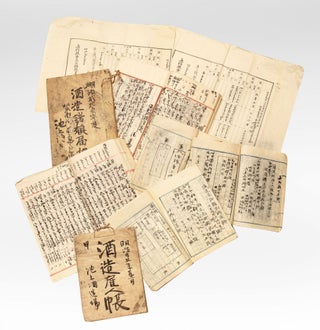Picture scroll on paper, with ten erotic paintings, with ample use of metallic pigments & paint made from ground-up seashells.
Scroll (300 x 4150 mm.), with pale green silk borders & endpapers, wooden core roller. [Japan]: n.d. but probably early Edo.
This is a fine example of an erotic scroll, anonymously painted as usual but with great skill. The scroll contains ten scenes of men (sometimes samurai) and women engaged in various sexual activities. Two of the scenes are threesomes, one of which shows a young samurai copulating with two older women. The hairstyles of both the women and men are typical of the pleasure courts of the early Edo period.
Erotic paintings in Japan have a long tradition, established well before the Edo period. “Many aspects regarding the production of early paintings with sexual content — when, where and by whom they were made, how they were appreciated — are still obscure…There was apparently a radical change in the form of erotic handscrolls from around 1600 onwards when paintings with a sequence of twelve [our example has ten] erotic scenes became common…Each scene in handscrolls of this type does not normally show any clear relationship with the adjacent scenes, nor is there usually any development, other than presenting a variety of couplings and sexual techniques. Each group of copulating figures exists within its own enclosed space, set against a plain or simply decorated background, as if functioning as an example of a possible sexual position…
“Shunga handscrolls of the seventeenth century are not usually signed…The production of shunga paintings during the seventeenth century was considerable and widespread, involving artists who ranged from the elite official schools to popular town painters…Shunga painting remained an important genre in terms of both quality and quantity right up until the modern era, and should no longer be excluded from the study of Japanese art and the broader study of the humanities.”–Akiko Yano, “Shunga Paintings before the ‘Floating World’,” in Timothy Clark et al., eds., Shunga. Sex and Pleasure in Japanese Art (British Museum: 2013), pp. 62 & 70-72.
The paintings are richly detailed with metallic pigments, elaborately detailed hairstyles, liberal use of a thick white pigment giving a 3D effect to fabrics, and sprays of gold and mica.
In very good condition, preserved in a nice old wooden box. Several of the paintings have minor abrading affecting the pigments. There is some unimportant occasional worming carefully backed on verso.
Price: $5,000.00
Item ID: 7719

